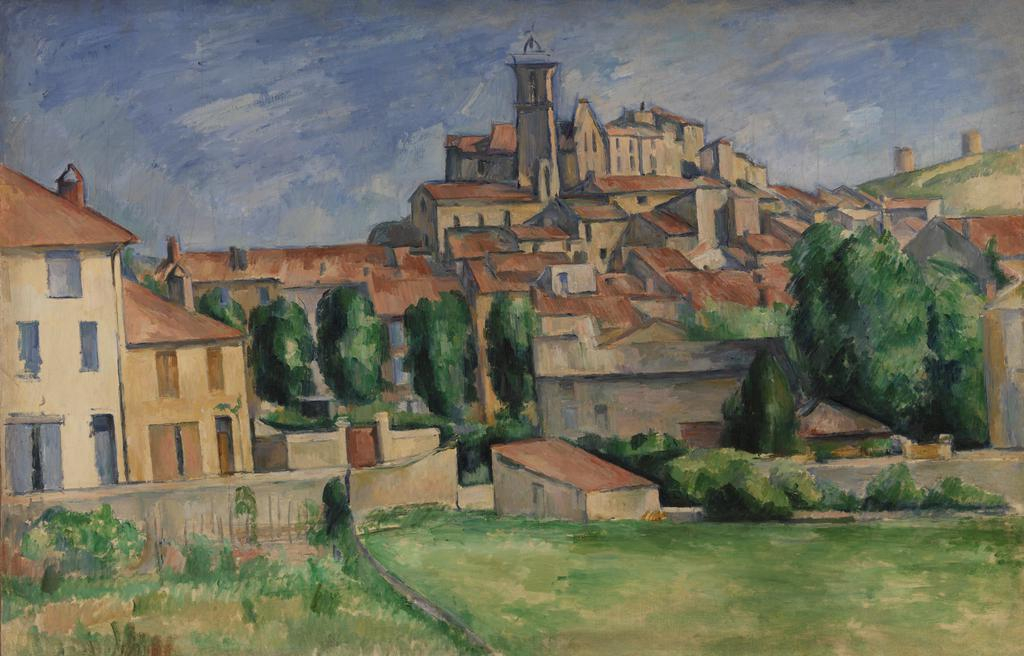
| "Rules: Logic and Applications" 2nd Workshop, Dec,
2019 |
| Aesthetic Morphisms |
| Jocelyn Ireson-Paine |
| www.jocelyns-cartoons.uk/rules2019/ |
Morphisms That Equalise Form
The previous slide suggested transforming
composite images to hide transitions between
the component images included into them.
The purpose of this is to make all the
objects depicted appear part of the same
scene. The Cézannes use a different
kind of equalisation. They equalise across the
whole of each part, not only its boundary;
and the parts have not been ripped from
different contexts as
had Max Ernst's and Terry Gilliam's.
Here is Cézanne's
Mont Sainte-Victoire seen from Les Lauves:

One interpretation of this is that painting different regions in a
similar style eliminates some "inessential" properties of the component
objects, enabling the viewer to concentrate more on the form as a whole.
Note how the form of the houses in the foreground is similar
to that of the
mountain in the background, even though they are at very different
distances.
There can be different kinds of form equalisation.
Compare Cézanne's
Le Château de Médan (left)
with his
View of Gardanne
(middle and right).
According to Peter Verdi's
Cézanne,
Le Château de Médan
uses rhythmic parallel brushstrokes.
These
give the painting a superficial unity, by giving
all parts of the surface a similar texture. But they also distort
individual elements. But by the mid-1880s five years later,
Cézanne had a more versatile technique where
his strokes followed the contours of each form, but still
made all forms within the image equally salient. This style
didn't distort
individual elements so much, so enabled him to "attend both to the
formal distinctions between things and the relations among them".






